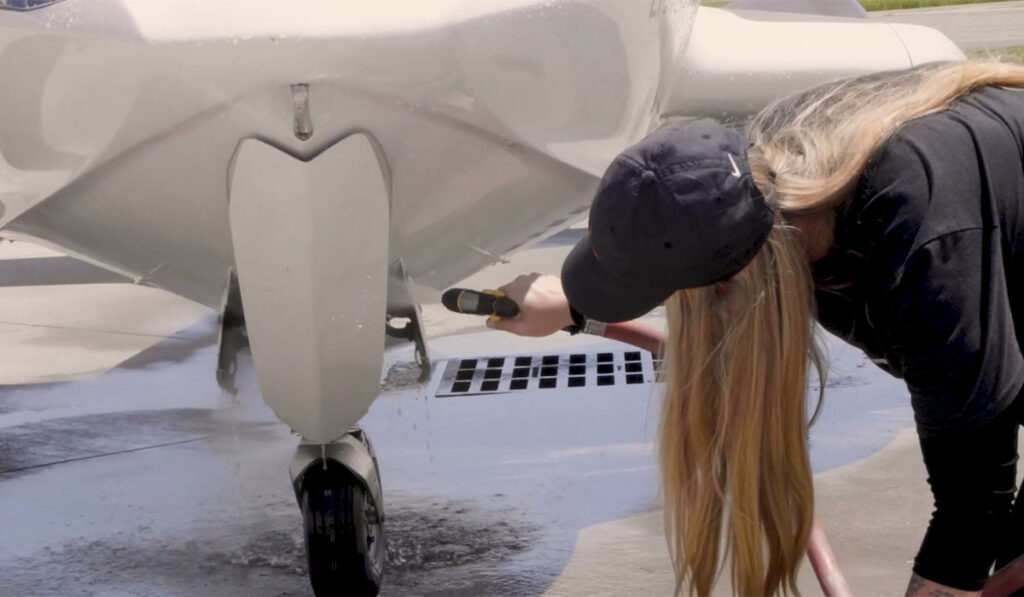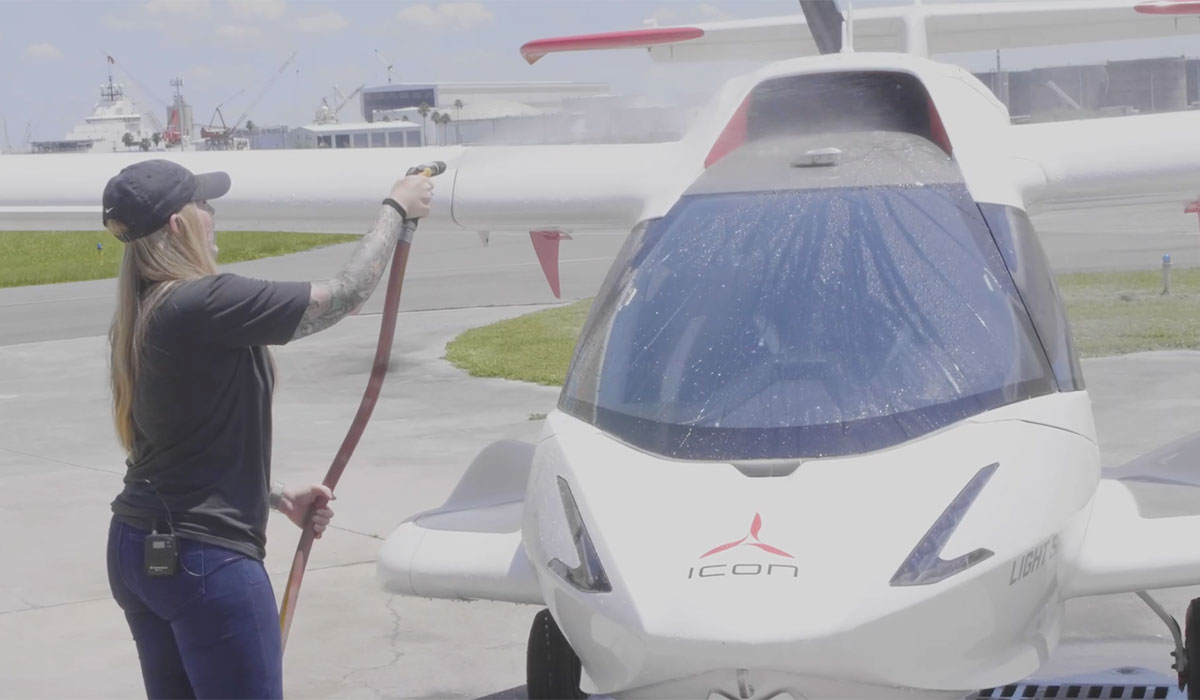
Touching down on the water and skimming gently on the surface is just one of the many aspects that make flying the A5 such a unique (and fun) experience. The carbon fiber fuselage provides incredible durability when splashing down on lakes, bays, and even salt water locations such as inter-coastal waterways and protected ocean spaces. While the A5 is constructed of mostly corrosion-proof composite material, there are many small fittings made up of nickel-plated steel, anodized aluminum, and stainless steel. These fittings are corrosion resistant but not corrosion-proof. Salt water operations and continuous, or frequent, use and storage in hot, humid environments can lead to oxidation and damage of metal parts. For that reason, it is important to make sure the aircraft is properly rinsed down after operations in salt water.
The ICON A5 Pilot’s Operating Handbook recommends rinsing the aircraft with fresh water as soon as practical after every flight involving contact with salt water. Watch ICON’s Chief Pilot as she walks through the freshwater rinse procedure to help prevent corrosion on the ICON A5.
Note that landing the plane in fresh water should not be considered a substitute for a freshwater rinse. While this material is covered thoroughly in the Owner Experience Training provided by ICON at aircraft delivery, our team wants to provide as many resources as possible to ensure your A5 flies as well on its first flight as it does on its one-hundredth. Increased attention paid to rinsing operations will further improve the long-term results of your corrosion prevention efforts.
Paul is the Director of Marketing for ICON Aircraft. Before ICON, Paul was the Director of Video and Branded Content for Ranker, INC. and The Wrap. He was the host of Hulu's first original production, The Morning After, and co-developed Twitch.TV's first talk show, Game Talk Live. He is a private pilot based out of Pasadena, CA.
